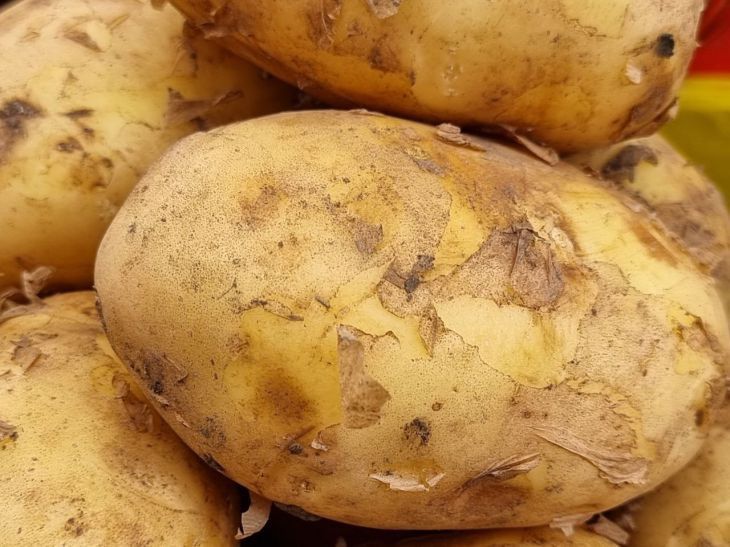Potato peelings can be a valuable organic fertilizer for many garden plants if used correctly.
This will help improve crop health and increase yields, especially for those looking to minimize waste and use environmentally friendly fertilization methods.
Nutritional properties of potato peelings
Potato peelings are a valuable source of nutrients necessary for normal plant development.
They contain such important elements as starch, potassium, phosphorus and vitamin C.
These components help strengthen roots, improve flowering and increase resistance to diseases.

Potassium, for example, improves photosynthesis and helps plants better absorb water, which makes potato peelings an ideal fertilizer for many crops.
How to Properly Use Potato Peels
Potato peelings must be properly prepared before use.
They can be crushed and buried in the soil near plants or added to a compost heap for later use.
To get the maximum benefit from the cleaning, you should let it sit for a while so that it has time to decompose and turn into a nutritious mass.
It is important not to use too many peelings at once, so as not to upset the nutrient balance in the soil.
Tomato plants and potato peelings
Tomatoes especially love potato peelings. They respond to them with accelerated growth and abundant fruiting.
Potassium and phosphorus contained in the peelings promote the development of a strong root system and improve the taste of the fruit.
Tomatoes can be fed with potato peelings, burying them in the soil next to the bushes or adding them to compost, which is then used to fertilize the plants.
Potato peelings for roses
Roses also respond well to potato peelings. These flowers require a lot of nutrients to bloom abundantly and maintain the health of the bushes.
Potassium and phosphorus present in the peelings promote the development of strong stems and bright flowers.
Using potato peelings as a fertilizer for roses helps improve the quality of flowering and increase the number of buds on the bush.
Carrot beds and potato peelings
Carrots, like many root vegetables, need quality nutrition. Potato peelings can be an excellent source of potassium and phosphorus for these plants.
Adding crushed peelings to the soil before sowing carrots helps improve the soil structure and accelerate the growth of root crops.
Regular use of this organic fertilizer helps carrots grow strong and healthy.
Potato peelings and fruit trees
Fruit trees such as apple and pear trees also benefit greatly from potato peelings.
Feeding trees with potato peelings improves fruiting and increases resistance to diseases.
The peelings can be buried in the tree trunk circle or added to compost, which is then used to fertilize the soil around the trees.
Ferns and Potato Peels
Ferns, as ornamental plants, require nutrient-rich soil.
Potato peelings can help improve soil structure and provide plants with essential micronutrients.
Feeding ferns with potato peelings promotes their growth and development, making the foliage brighter and thicker.
The crushed peelings can be added to the soil around the ferns or added to compost.
Houseplants and potato peelings
Some houseplants also love potato peelings. Plants such as ficus, monstera, and dieffenbachia benefit from feeding this organic fertilizer.
The peelings can be finely chopped and mixed with soil when replanting plants or added to compost, which is used to feed indoor flowers.
This improves the soil structure and provides plants with the necessary nutrients.
Earlier we told you what plants to plant on your property to dry it out.








